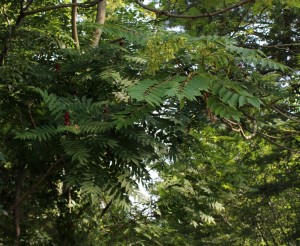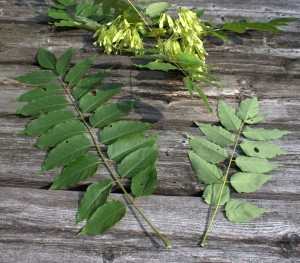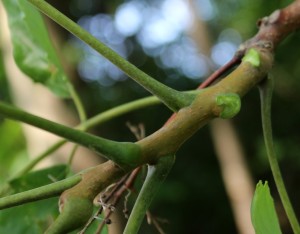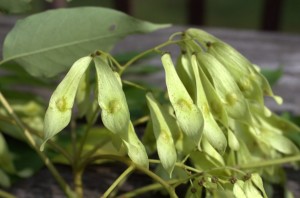The Tree of Heaven that grows here on Earth has a descriptive, but curious name. It’s a small to medium tree that grows so fast it can add on more than 9 feet in height in one season!
Although planted in America purposely long ago, this tree may be considered a nuisance due to its fast growth habit.
The Tree of Heaven, Ailanthus altissima, originated in Asia. It was brought from China to England in the mid-1700s and then introduced to North America in 1874 as an urban ornamental, according to my favorite tree book: Grolier’s Field Guide to North American Trees.
Just being listed in that book, which gives the natural history of 100 introduced species as well as all the native North American trees, shows the tree to have established itself in the U.S.A. long ago.
You can find it across much of the country in cities and in rural areas.
Tree of Heaven was introduced as an urban ornamental because it’s a really hardy species. It can grow in poor soils, in dry conditions and in smoggy cities.
It was often planted in cities to quickly provide green areas and the benefits of shade and air purification.
In our rural landscape in Central Pennsylvania Tree of Heaven can be found growing at the edge of fields, along roads and in fallow fields.

It was discovered here growing right next to Staghorn Sumac along the lane down to the highway.
(Click on any image to see a larger view.
Photos taken 29 July 2015.)
How to Know Tree of Heaven

Tree of Heaven Identifying Characteristics
- huge, feather-like, pinnately compound leaves
- lance-shaped leaflets with basal teeth
- leaflets with short stems
- twig bark smooth
- yellow-green winged seeds dangle in clusters

Nature rubbings show the leaf shape and basal teeth on the lower leaf edge.
Small branches are smooth and distinctly different from the velvety twigs of Staghorn Sumac.

Yellow-green winged seeds dangle from the branch tips. Wings will help to scatter the seeds on the wind, but some of them will remain on the trees all winter.
